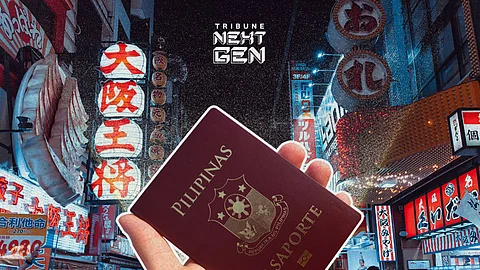
- NEWS
- the EDIT
- COMMENTARY
- BUSINESS
- LIFE
- SHOW
- ACTION
- GLOBAL GOALS
- SNAPS
- DYARYO TIRADA
- MORE

Japan has long held a deep fascination for Filipino travelers. In recent years, that fascination has turned into an unstoppable wave of tourism.
From budget travelers eager to experience the neon-lit streets of Osaka to families seeking the magic of Disneyland Tokyo, the number of Filipinos visiting Japan has surged. Data from the Japan National Tourism Organization shows that 818,700 travelers from the Philippines visited Japan in 2024, up 31.6% from 2023. In December alone, the Land of the Rising Sun attracted over 100,000 visitors from our nation.
This growing demand for travel, however, has strained Japan’s visa processing system in the Philippines. Long wait times and backlogs became an unavoidable reality. In January, the embassy noted that visas would take up to two months to process, a big increase from the previous five-day estimated turnaround time.
Recognizing this, the Embassy of Japan is introducing a major change in 2025 — the establishment of the Japan Visa Application Center (JVAC), set to open five locations on 7 April 2025.
This shift is expected to make the process more efficient, ensuring that more Filipinos can explore Japan without the frustrations of delayed applications.
Before stepping foot in Japan, Filipino travelers must first navigate the visa application process. Unlike other destinations where a simple online application suffices, Japan requires a Temporary Visitor Visa for short stays, whether for tourism, business, or visiting relatives.
The basic requirements remain the same, and applicants will need to prepare the following:
Passport – Must be valid and undamaged, with at least two blank pages.
Visa application form – Completed in English
Recent passport-sized photo – 4.5 x 3.5 cm, taken within the last six months, with a white background.
Travel itinerary – Must include flight details, accommodation information, and a day-by-day schedule.
Financial documents – Bank statements, income tax returns, or proof of employment to demonstrate financial capacity.
Letter of guarantee (if applicable) – Required if someone in Japan is sponsoring the trip.
Invitation letter (if applicable) – Must detail the purpose and background of the invitation if visiting family, friends, or for business.
Additional supporting documents – May include employment certificates, business registration papers, or tax documents, depending on the visa type.
For those applying for long-term visas, a Certificate of Eligibility (COE) is required. The good news? As of 2023, Japan allows COEs to be sent via email, eliminating the need for physical mailing and reducing processing time significantly.
Until now, visa applications were handled primarily through accredited travel agencies. While this system helped manage the overwhelming demand, it also led to inefficiencies and inconsistencies in processing times. Starting 7 April 2025, applications will now go through visa centers operated by VFS Global with the Japanese Embassy.
These dedicated centers are located in five key areas across the country: Makati City, Quezon City, Parañaque City, Cebu City, and Davao City. In Metro Manila, applicants may visit the centers at Makati Circuit Corporate Center Tower Two (AP Reyes Street, Theater Drive Circuit), Gateway Tower Mall in Araneta City, Cubao (Quezon City), or Parqal Mall Building 5 along Diokno Avenue corner Macapagal Boulevard (Parañaque City).
In the Visayas and Mindanao regions, the Cebu City JVAC is at Faustina Center, Level 6, F. Cabahug Street, Kasambagan, while the Davao City branch is located at Unit FEG 9-10, 2nd Floor, Alfresco Area, Felcris Centrale on Quimpo Boulevard.
Applicants should note that a visa and center usage fee of P520 will be charged, with the amount subject to change based on nationality and type of visa being applied for.
By centralizing the process, the Japanese Embassy aims to eliminate bottlenecks and ensure a faster, more organized visa application experience. These new centers will be open Monday to Friday, from 7:00 AM to 4:00 PM, providing applicants with a dedicated space to submit their documents without relying solely on travel agencies.
Even with these improvements, visa applications still require careful scrutiny and may take weeks to process. Those applying for a multiple-entry visa — often granted to frequent travelers or individuals with significant financial capacity — may undergo a longer review process.
Despite these safeguards, the Embassy encourages applicants to submit their documents well in advance of their travel dates. Given the increasing volume of Filipino tourists heading to Japan, early application is key to avoiding last-minute delays.
